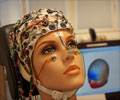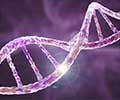Mutations in the prickle gene in Drosophila could be responsible for more than just altering the bristles on the fly's body that point them to the wrong direction

Through a series of experiments, Dr. Manak found that flies with prickle mutations had seizures with jerky movements of their wings and leg muscles that closely resembled the myoclonic form of epilepsy that affects patients with mutations in the human version of the gene. During myoclonic epileptic seizures, the patients' muscles involuntarily twitch and jerk.
In a 2011 paper about the discovery, the University of Iowa scientists also reported that valproic acid, the anti-convulsive drug, which has been used to effectively treat myoclonic epilepsy patients with PRICKLE gene mutations, also helped control seizures in the mutated flies. These findings suggested that the pathway responsible for seizures in flies and humans was conserved, and that flies with prickle mutations could now be used to screen new experimental therapeutic agents for this disorder. These experiments are now underway.
The scientists have continued to investigate Drosophila flies with the mutated prickle gene. They determined that the seizure threshold, the amount of electrical stimulation required to induce a seizure, was lower in flies with the prickle mutation than in the normal (control) Drosophila flies of the same age, demonstrating that these flies exhibited a classic characteristic of seizure susceptibility. In addition, muscle recordings after experimentally induced electric shock through the nervous system revealed that spiking activity, a measure of neuronal activity, was higher in the flies with the prickle mutations than in the control flies.
Using a technique that they developed for the study, the researchers also found that ataxia (or uncoordinated gait), which occurs in patients with myoclonic epilepsy, also occurs in flies with the prickle gene mutation. The ataxia was more severe in the Drosophila with two prickle gene mutations than in flies with one prickle gene mutated, suggesting that prickle dosage plays an important role in controlling seizures.
The University of Iowa researchers' most recent studies have identified the basic cellular mechanism that goes awry in the prickle mutant flies, leading to the epilepsy-like seizures, and these data will be presented at the GSA Drosophila Research Conference.
Advertisement
Source-Eurekalert













